It’s the perfect musical accompaniment for reading Pynchon’s new novel.
So, without any further adieu, here ’tis:
Also, Penguin Press just posted on Instagram a Shadow Ticket promotional video clip that’s pretty cool:
American Novelist
It’s the perfect musical accompaniment for reading Pynchon’s new novel.
So, without any further adieu, here ’tis:
Also, Penguin Press just posted on Instagram a Shadow Ticket promotional video clip that’s pretty cool:
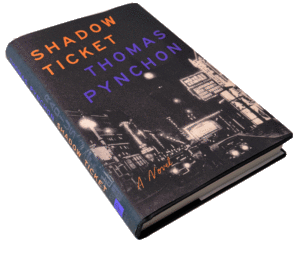 We’re happy (relieved!) to report that the wiki for Thomas Pynchon’s new novel Shadow Ticket is now LIVE.
We’re happy (relieved!) to report that the wiki for Thomas Pynchon’s new novel Shadow Ticket is now LIVE.
(Special thanks to: David Kipen and Kasimir Gabert…)
I wasn’t able to get through the entire novel as I wasn’t provided with an advance copy in time to both read, digest, and wikify the book, but the wiki’s ready to go. We’ll be adding contributors soon, as this novel is RICH in detail (and proper nouns and references), but the basics are there, including lots of reviews, as well as the Page-by-Page Annotations and Alphabetical Index. These will be fleshed out in the coming days, weeks and months as contributors add new detail and insights.
Snag a copy: Hardcover | Paperback
Please enjoy this resource… And feel free to send along comments, etc.
And enjoy this!
This article was originally published by Lingua Franca in its September/October 1995 issue (Vol. 5, No. 7). It is also replicated here.
Ever since Thomas Pynchon became the Great American Novelist, he has fled from his academic afcirmirers. Have they finally caught up with him?
By Scott McLemee
IN 1963, TIME MAGAZINE decided to exhibit before the public a specimen of the Brilliant Young American Novelist. So the editors sent a photographer to get a portrait of Thomas Pynchon, the author of a well-received (if perplexing) first novel called V. The book was a strange mixture of black humor and quest romance, in which the metaphysical hysteria of Kafka’s tales cohabited, somehow, with Jack Kerouac’s picaresque hipsterism. The author was twenty-six, and already somewhat more than promising. For Time‘s purposes, he was perfect, except for one problem. Thomas Pynchon did not want his picture taken.
Perhaps he just felt shy. There was, for one thing, the question of his teeth: Pynchon thought they made him look like Bugs Bunny. In any case, when the photographer tracked him down in Mexico City, Pynchon simply fled, hopping on a bus and disappearing into the mountains. Before long, his Mexican neighbors had nicknamed him Pancho Villa — not for his skill in evading the norteamericanos, but simply because Pynchon looked the part. He began cultivating a vast, wild moustache, as if to conceal his identity (and his teeth) behind a mask.
By the time his fourth novel, Vineland (1990), appeared, journalists knew better than to expect an interview with Pynchon, much less to ask for a picture. Writers often crave solitude but Pynchon has made an art of it. His writings are infrequent, his public profile nonexistent. The last published photograph of him dates from 1955. Even his whereabouts at any given time are a closely guarded secret. And this desire for invisibility goes well beyond shyness. Pynchon wants attention to go to his books, not his private life.
It’s worked. Over the decade following the Mexican escape, he published two more novels, The Crying of Lot 49 (1966) and Gravity’s Rainbow (1973). With them, Pynchon quit the league of merely gifted writers. He became the Great American Novelist. Dense with plots both narrative and conspiratorial, woven together with endlessly complex systems of metaphor and historical allusion — Pynchon’s fictions constructed a great labyrinth.
Today, quite a few literary critics wander that maze happily, in no particular hurry to leave. The interpretation of Thomas Pynchon has become, in brief, an academic industry. That fact may amuse him, and then again it may not. (He isn’t saying.)
BUT JUST HOW STABLE can an academic community be when it focuses its attention on a literary figure who composes epics of paranoia and obsession and insists on otherwise removing himself from the public sphere? By guarding the boundary between his life and his art, Thomas Pynchon has been asking for trouble. And now he has it. During the summer of 1995, an old rumor started circulating with new energy. And already it has divided the Pynchon community, bit by bit, into camps. Call it “the Wanda Tinasky question.”
A group of literary sleuths in the San Francisco area believes that, during the 1980s, Thomas Pynchon wrote a series of letters to Northern California newspapers under a variety of pseudonyms, with “Wanda Tinasky” being the most frequent. When the claim was first aired in 1990, few Pynchon scholars paid much attention; it all seemed too outlandish. But with a collection of Tinasky’s letters scheduled for fall publication, the topic of Pynchon’s possible authorship has finally become a serious question for discussion. Could literature’s most ostentatiously silent author have cryptically revealed a whole new oeuvre to his thirsty readers? Some Pynchon critics think so. Others who, at first, believed the Tinasky material was the novelist’s work have now changed their minds. And that shift of opinion has already generated a bout of speculation in some quarters: Just what were these eminent Pynchonians afraid of?
The debate, if not yet heated, is certainly growing warm.
(This post’s info has been superseded by the actual book, so consider it obsolete!)
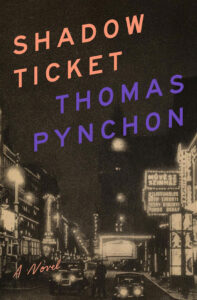 Well, it appears the cover art for Shadow Ticket
Well, it appears the cover art for Shadow Ticket is taking shape is set. A friend received an Advance Reading Copy (ARC) with the cover shown at left. You can now pre-order it at Amazon.com. And, assuming the cover art displayed on Penguin Random House’s UK website is correct, the UK edition of Shadow Ticket will be similar but with different typography.
The page count is 293 for the US ARC, although it states 304 on the back cover.
Publication is slated for October 7, 2025 and, as stated above, review copies began being sent out around August 1 or so.
You can now pre-order Shadow Ticket from Amazon, for $27.
From The TravelAsker website:
“A shadow ticket is a type of airline ticket that is purchased from a third-party seller, also known as a broker. These tickets are not sold directly by the airline, and they are typically sold at a lower price than the airline’s published fares. Shadow tickets are also sometimes called consolidator tickets, bucket shop tickets, or wholesale tickets.”
From the StackExchange website, asked 6 years ago:
“I have been told that you can go online with Lufthansa and book a “shadow ticket” which makes a reservation for travel without payment and that you can renew this “shadow ticket” every 24 hours. Has anyone heard of this or know who I could contact at Lufthansa to get this information? Customer service had no idea.”
The Pynchon-penned blurb:
Milwaukee 1932, the Great Depression going full blast, repeal of Prohibition just around the corner, Al Capone in the federal pen, the private investigation business shifting from labor-management relations to the more domestic kind. Hicks McTaggart, a onetime strikebreaker turned private eye, thinks he’s found job security until he gets sent out on what should be a routine case, locating and bringing back the heiress of a Wisconsin cheese fortune who’s taken a mind to go wandering. Before he knows it, he’s been shanghaied onto a transoceanic liner, ending up eventually in Hungary where there’s no shoreline, a language from some other planet, and enough pastry to see any cop well into retirement—and of course no sign of the runaway heiress he’s supposed to be chasing. By the time Hicks catches up with her he will find himself also entangled with Nazis, Soviet agents, British counterspies, swing musicians, practitioners of the paranormal, outlaw motorcyclists, and the troubles that come with each of them, none of which Hicks is qualified, forget about being paid, to deal with. Surrounded by history he has no grasp on and can’t see his way around in or out of, the only bright side for Hicks is it’s the dawn of the Big Band Era and as it happens he’s a pretty good dancer. Whether this will be enough to allow him somehow to Lindy-hop his way back again to Milwaukee and the normal world, which may no longer exist, is another question.
Shadow Ticket will be published simultaneously in the U.K. by Jonathan Cape, a Penguin Random House imprint, on October 7, 2025. According to Blackwell’s website, the U.K. edition will be 432 pages. However, Penguin Random House’s U.K. website states it will be 304 pages. I guess they’re still working it out…
As mentioned above, the typography for the U.K. edition is different, at least at this point, and perhaps a bit better. Or perhaps the slightly diagonal font of the U.S. edition is meant to brand this new novel to be in a genre akin to his two previous novels (both also Detective or Noir fiction) &151; Bleeding Edge and Inherent Vice — which have a similar typographical treatment?
Several months ago, Spotify user Kauê Nunes published a Shadow Ticket playlist on Spotify! I’ve reached out to him to see what’s up, so we’ll see… The “cover” image is very cool!
 It was seeing one of our American colleagues recently describing them as “a group of bootlegged Thomas Pynchon chapbooks printed in the UK” that brought back to mind a delightful piece of original research carried out by Florina Jenkins for a London Rare Books School essay. To set the record straight, here is a pared-down version of her findings.
It was seeing one of our American colleagues recently describing them as “a group of bootlegged Thomas Pynchon chapbooks printed in the UK” that brought back to mind a delightful piece of original research carried out by Florina Jenkins for a London Rare Books School essay. To set the record straight, here is a pared-down version of her findings.
In Pynchon’s The Crying of Lot 49, Oedipa Maas, starting with a pirated paperback, attempts to find and decode the definitive text of a mysterious Jacobean revenge play. Inspired by Oedipa’s labyrinthine investigations, I embarked on a quest in search of Pynchon’s own “pirated editions.” The Clifford Mead bibliography (1989) lists six “unauthorized editions” of early Pynchon stories – elsewhere calling them “piracies” – all published in England between 1976 and 1983. Four of these, the subject of the present piece, were published as pamphlets by Aloes Books, a London-based small independent press.
Thomas Pynchon (b. 1937) is one of the most remarkable contemporary American novelists – the “most monstrous talent in the post-war West” according to Time Out. Famously, he shies away from the media, grants no interviews, no photo opportunities, and has made no public appearances beyond the celebrated bag-over-his-head cameos in The Simpsons.
With almost no clues, I started my sleuthing mission in a friend’s bookshop, where I was delighted to find some of the Aloes pamphlets. Originally published in American periodicals between 1959 and 1964, these stories were not readily accessible until the appearance of Pynchon’s Slow Learner in 1984, when the intensely private author accompanied their release with an extraordinary autobiographical introduction. He describes the painful experience of re-reading his earliest writing:
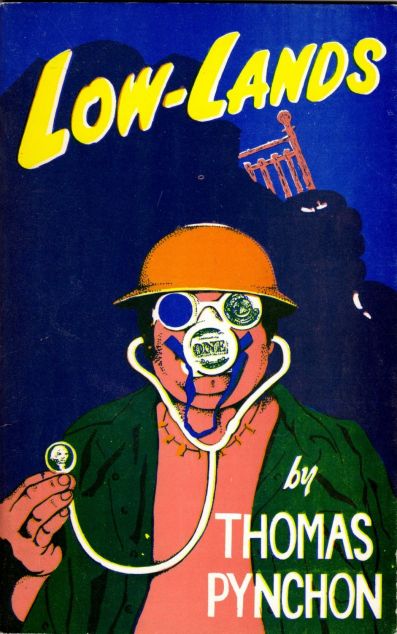 Ink Monkey salutes the genius of iconic publisher Aloes Books, and co-founder Jim Pennington, whose samizdat publications during the 1970s and 1980s included works by Thomas Pynchon, Bob Dylan, William Burroughs, Patti Smith and Kathy Acker.
Ink Monkey salutes the genius of iconic publisher Aloes Books, and co-founder Jim Pennington, whose samizdat publications during the 1970s and 1980s included works by Thomas Pynchon, Bob Dylan, William Burroughs, Patti Smith and Kathy Acker.
In the mid-1960s a revolution took place in British publishing. This venerable industry, which had barely changed or needed to change since the setting up of the great publishing houses in the Twenties, Thirties and Forties suddenly found itself under attack as a number of maverick writers, radicals and alternative entrepreneurs seized the means of production and ushered in the golden age of the small presses.
Today, when much of our literary culture is shaped, defined and digitally delivered to us by large conglomerations, the notion of the literary lone wolf, sitting in a kitchen, or in the back room of a bookshop, or a rural or urban commune or squat and printing a book or magazine at a table is as remote as the 1960s itself.
One such press that set up was Aloes Books, founded by the printer Jim Pennington and two poets from the alternative poetry scene, Allen Fisher and Dique Miller.
[Read more…]
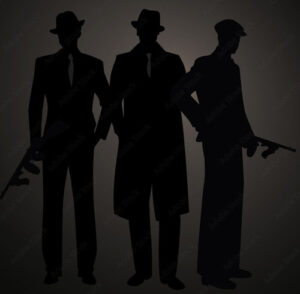 Twelve years after his previous novel, Bleeding Edge, Thomas Pynchon will be unleashing his ninth novel, Shadow Ticket. The publication date is October 7, 2025. Coming in at 384 pages, it will be a tad longer than his 2009 novel Inherent Vice.
Twelve years after his previous novel, Bleeding Edge, Thomas Pynchon will be unleashing his ninth novel, Shadow Ticket. The publication date is October 7, 2025. Coming in at 384 pages, it will be a tad longer than his 2009 novel Inherent Vice.
From Penguin Press’s press-release description it seems Shadow Ticket follows what has become a favorite Pynchon plotline: a detective who gets entangled in something much higher than his pay grade, including shady characters, damsels in distress, paranoia, and mystics.
I wouldn’t be surprised if Shadow Ticket is a sort of “placeholder” while he pounds away at a much larger and ambitious tome, but who knows?
Also, like previous Pynchon novels, the description appears to have been written by Pynchon himself (according to the New York Times, this was confirmed by Penguin):
Milwaukee 1932, the Great Depression going full blast, repeal of Prohibition just around the corner, Al Capone in the federal pen, the private investigation business shifting from labor-management relations to the more domestic kind. Hicks McTaggart, a one-time strikebreaker turned private eye, thinks he’s found job security until he gets sent out on what should be a routine case, locating and bringing back the heiress of a Wisconsin cheese fortune who’s taken a mind to go wandering. Before he knows it, he’s been shanghaied onto a transoceanic liner, ending up eventually in Hungary where there’s no shoreline, a language from some other planet, and enough pastry to see any cop well into retirement—and of course no sign of the runaway heiress he’s supposed to be chasing. By the time Hicks catches up with her he will find himself also entangled with Nazis, Soviet agents, British counterspies, swing musicians, practitioners of the paranormal, outlaw motorcyclists, and the troubles that come with each of them, none of which Hicks is qualified, forget about being paid, to deal with. Surrounded by history he has no grasp on and can’t see his way around in or out of, the only bright side for Hicks is it’s the dawn of the Big Band Era and as it happens he’s a pretty good dancer. Whether this will be enough to allow him somehow to lindy-hop his way back again to Milwaukee and the normal world, which may no longer exist, is another question.
I first came across a mention of Dick Schaap‘s 1964 article about Thomas Pynchon’s efforts to remain out of the public eye via a New York Times article “Pynchon’s Letters Nudge His Mask” (4 March 1998), which included a passage about to Pynchon’s success in avoiding the press after the publication of his first novel, V. (1963):
Although Mr. Pynchon apparently eluded those magazine reporters, he had a more difficult time with Dick Schaap, who in 1964 was the city editor of The New York Herald Tribune. Mr. Schaap was writing an article about Mr. Pynchon for Book Week, The Tribune‘s literary supplement. Mr. Pynchon was furious, assuming that the piece ‘will be riddled with the same lies, calumnies and all-around knavish disregard for my privacy’ as previous articles.
When the Herald Tribune article is printed, Mr. Pynchon buys the newspaper in Mexico. It makes him ‘sick, almost homicidal,’ especially the comments about a former girlfriend.
In response to Mr. Pynchon’s remarks, Mr. Schaap, an author and television commentator, said recently, ‘Nothing in my article was intended to be damaging to his life or his work, for which I have total respect.’
Although Mr. Schaap’s reputation rested firmly on his sports writing, here he was digging around to locate the whereabouts of a recently minted literary star. His article, which appeared in the New York Herald Tribune‘s “Book Week” magazine, provides an interesting glimpse into Pynchon’s early efforts to remain out of the public eye. A colleague of mine believes that what might have most annoyed Pynchon was the article’s “chatty knowingness.”
[Read more…]
By Ali Dehdarirad
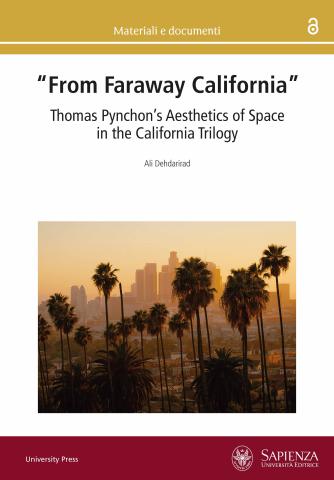 I hope I can steal a minute of your time to draw your attention to the publication of my book on our favorite writer: “From Faraway California”: Thomas Pynchon’s Aesthetics of Space in the California Trilogy. The book brings together my passion for Pynchon’s work and my interest in urban and regional studies, dating back to graduate school. Ever since I came across The Crying of Lot 49, I’ve been fascinated by Pynchon’s intriguing fiction, and it is my hope that this book makes a useful contribution to Pynchon studies and the Pynchon community. It is available as an eBook (open access format) on the website of Sapienza University Press. The following is some background on how I came to write my new book. —Ali Dehdarirad
I hope I can steal a minute of your time to draw your attention to the publication of my book on our favorite writer: “From Faraway California”: Thomas Pynchon’s Aesthetics of Space in the California Trilogy. The book brings together my passion for Pynchon’s work and my interest in urban and regional studies, dating back to graduate school. Ever since I came across The Crying of Lot 49, I’ve been fascinated by Pynchon’s intriguing fiction, and it is my hope that this book makes a useful contribution to Pynchon studies and the Pynchon community. It is available as an eBook (open access format) on the website of Sapienza University Press. The following is some background on how I came to write my new book. —Ali Dehdarirad
Let me start by sharing some bits of my “Pynchon experience.” I gave The Crying of Lot 49 as a gift to my wife eight years ago, but she hasn’t finished it yet. I think somewhere around chapter three she said something like “that’s enough.” As odd as it might sound, I myself never got to the end of the Italian translation either. On second thoughts, I’ve never read any Pynchon book in Italian because I believe no translation could ever do justice to the complexity and depth of his fiction. My first encounter with Lot 49 is abundant proof of this. I remember reading the first pages of the novel as an undergrad and wondering, What the hell is going on? But it was all exciting. Lot 49 gave me that rush of adrenaline you feel when reading a novel that offers all you need to sit down for long hours and not wanting to leave the book unless the Grim Reaper knocks on your door. Thus began my labor of love with Pynchon, as I stood with Oedipa “in the living room, stared at by the greenish dead eye of the TV tube, spoke the name of God, tried to feel as drunk as possible” (CL, 1). By the time I got to the end of the book, I didn’t want it to finish, as if I had to “keep it bouncing” (CL, 112). Though the novel ended there (or perhaps it never did), it opened up a fresh horizon, enticing me to read Pynchon’s œuvre.
by Tore Rye Andersen
The Pynchon Wiki features a great little article by Linda Getter on her husband Marc Getter, the artist behind the striking dust-jacket of the first edition of Gravity’s Rainbow. According to Linda, Marc “loved the idea of a single image being responsible for communicating the essence of a book.” This is a lot to ask of a cover illustration, especially when the book it adorns is as complex as Gravity’s Rainbow, where rockets, dodoes, and pigs intermingle, and where excruciatingly beautiful landscape descriptions and vulgar sex scenes appear side by side with cartoonish tales of the future and pointed political satire. Even though it can be discussed whether Getter’s image communicates the essence of Pynchon’s masterpiece, the cover is certainly iconic. The vibrant colors (which are notoriously prone to fading) make the jacket pop, and the three-dimensional blue letters of the title and the sharp black silhouette of the London townhouses form an arresting contrast to the soft, airbrushed orange and yellow sky.[1]On the 1975 first edition of the French translation of the novel (incongruously titled Rainbow), the anonymous row of townhouses has been replaced with a more recognizable skyline that includes St. … Continue readingI recently published the monograph Planetary Pynchon: History, Modernity, and the Anthropocene (Cambridge University Press, 2023). The book is in many ways a life’s work, a summation of thirty years of deep fascination with and research on Pynchon’s work. As part of this fascination, I have written quite a few articles throughout the years on the paratexts of Pynchon’s novels, including analyses of the covers of V., The Crying of Lot 49, Gravity’s Rainbow, and Inherent Vice. While the paratextual dimension is not central to my new book, my interest in book design made the task of choosing just the right cover image for my book a daunting one.
Briefly told, my book argues that Pynchon’s three largest novels — Gravity’s Rainbow, Mason & Dixon, and Against the Day — can profitably be read as a trilogy, or one large megatext, which presents a coherent world-historical account of how the emergence and global spread of European modernity and resultant phenomena such as industrialization, capitalism, and colonialism have threatened and often eradicated alternative worldviews, peoples, and other lifeforms, all with disastrous consequences for the planet. In other words, Pynchon’s global novels show how the rise of modernity led to the current age of the Anthropocene.
[Read more…]